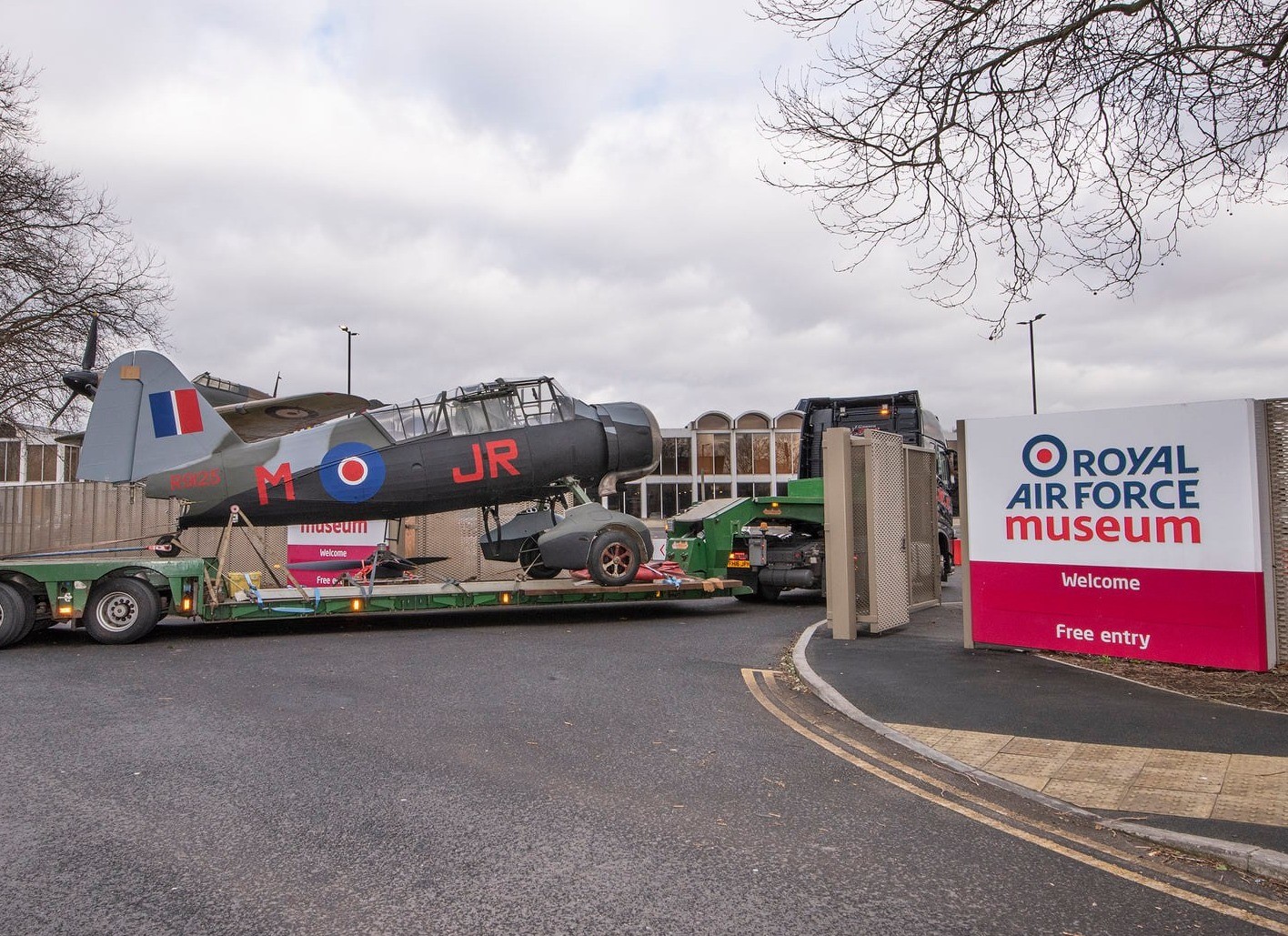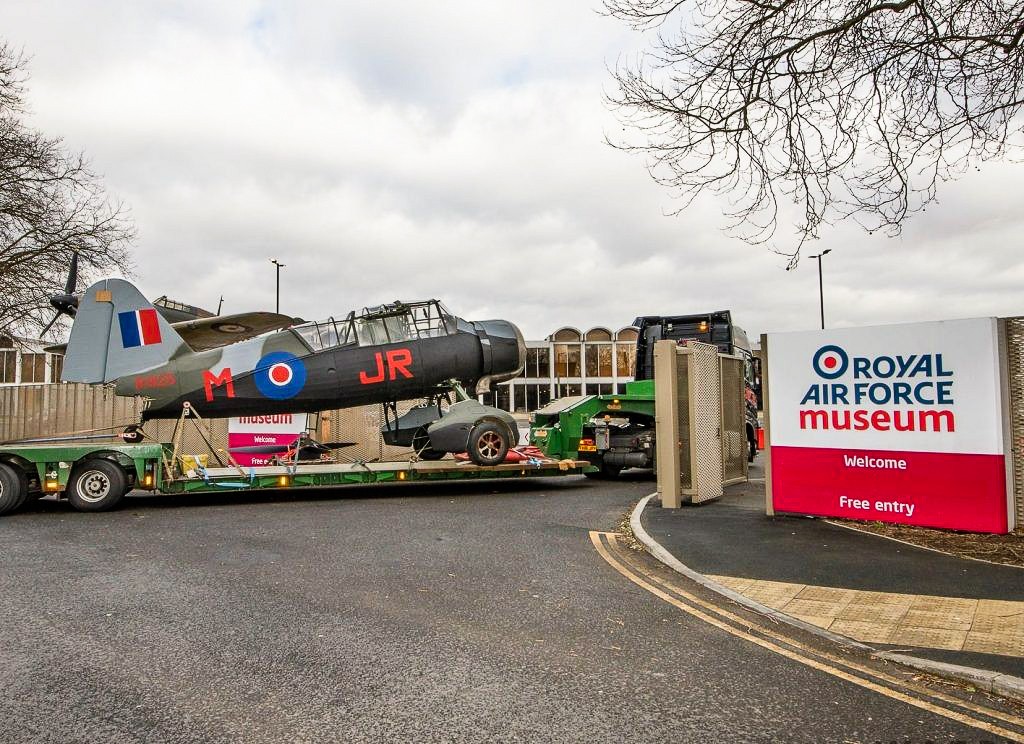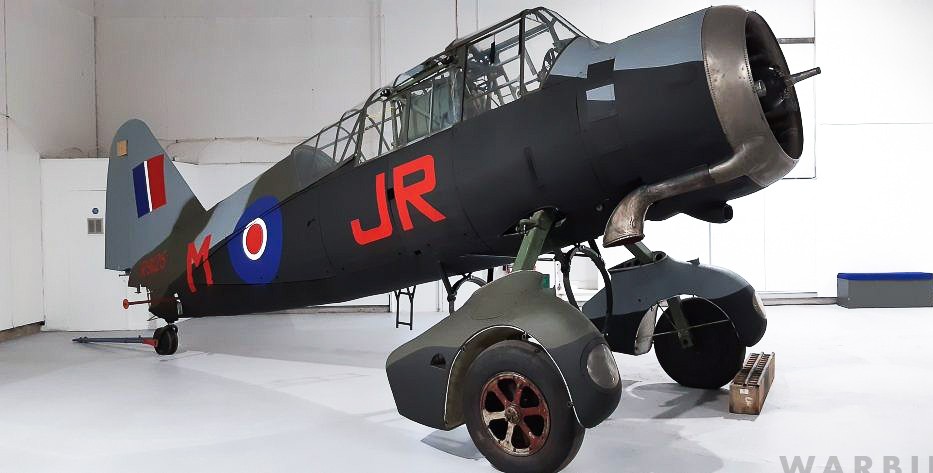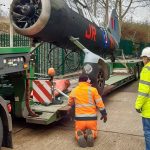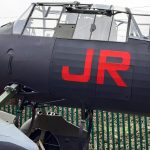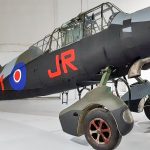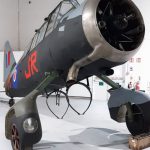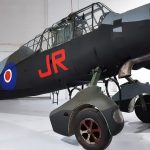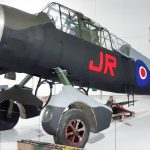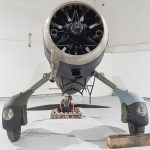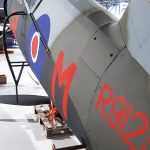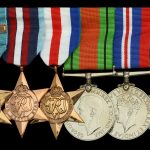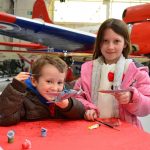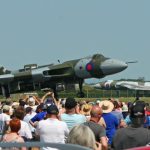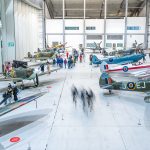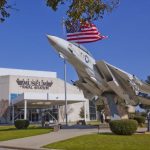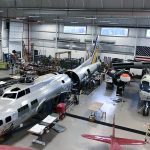Beginning in November 2016, the aircraft underwent an in-depth inspection and condition assessment followed by a few minor structural repairs. The airframe’s damaged fabric covering was replaced while a team of volunteers cleaned and lubricated mechanical systems back to a functional state.
The aircraft’s biggest transformation comes from the recovering of its airframe in a traditional Irish linen fabric, hand-sewn by the Museum’s Surface Finish Technician and then strengthened using original doping techniques.
The technician responsible for this effort, Clive Roberts, noted: “Thousands of stitches were made attaching the linen to the fuselage, wings and tailplane followed by six coats of doping, a UV microwave protection layer, primer and then finally painted in its 161 Squadron Special Ops color scheme. It’s a slow process but essential to preserving the aircraft for as long as possible. We sought the help of a Lysander expert based in Switzerland, who provided us with original photographs and technical drawings to help with the paint scheme. One of the photos shows that during R9125’s service with 161 Squadron the cooling gills were incorrectly fitted so the camouflage no longer lined up. Since this has been documented we will change ours to match that.”
R9125 first became operational in late September 1940, joining No.225 Squadron (Army Cooperation) as a coastal patrol and photo-reconnaissance aircraft, based just north of Salisbury at RAF Tilshead in Wiltshire. It took on the Special Duties role with No.161 Squadron in 1944, serving for a further two years until its retirement in 1946.
The Lysander was originally designed for Army Co-operation duties, including artillery spotting and reconnaissance. However, its lasting fame does not come from this role, but rather the clandestine operations as a Special Duties aircraft ferrying Allied agents in and out of enemy-occupied Europe. Despite some notable successes, the Army Co-operation units suffered extremely high casualties – over 170 Lysanders were sent to France in 1939 but only 50 returned home to England following the evacuation at Dunkirk in early June, 1940. Following their withdrawal from France, Lysanders patrolled the coastal areas of south and east England as part of an anti-invasion reconnaissance measure. Later the type began air-sea rescue duties over the English Channel and the North Sea.
Visitors to RAF Museum London will get their first glimpse of the aircraft in Hangar 5 this spring.







